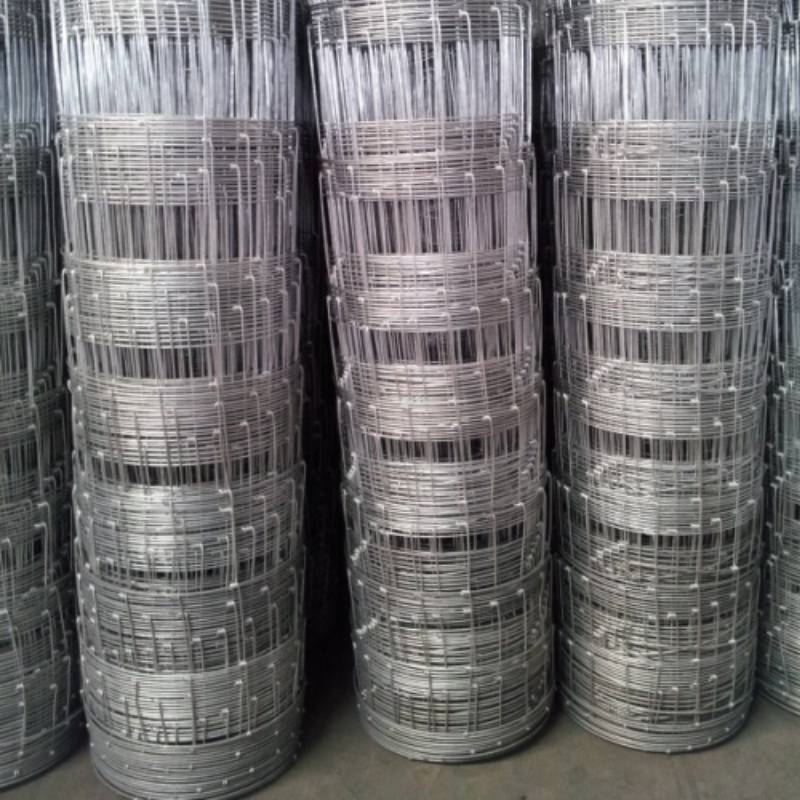-
Email:zhao@hyliec.cn
-
Tel:+86 311 85273988
-
WhatsAPP:8613931128750
Field Fence | Galvanized, Heavy-Duty, 5 ft x 330 ft
Field Fence: what’s actually working on farms right now
If you manage pasture or keep animals, you already know the fence is either your quiet partner—or your headache. Over the last two years I’ve walked sites from Inner Mongolia to the Midwest, and, to be honest, the big shift is toward high‑tensile woven wire with heavy coatings and smarter post spacing. It sounds dry; it’s not. The payoff is fewer breakouts, fewer callouts, and better fence life in lousy weather. Many customers say the newer fixed‑knot patterns are tougher than they look, and they’re right.

What is it, really?
A Field Fence is a woven or welded wire barrier stretched between wood or steel posts to contain livestock, check wildlife intrusion, and mark boundaries. The woven, high‑tensile type has taken the lead because it flexes under load (hooves, snow, wind) instead of failing at a weld. Origin is China here, with serious upgrades in coating lines—zinc and Zn‑Al (aka Galfan)—that, surprisingly, rival legacy EU/US mills in corrosion hours.
Typical specification (real‑world picks)
| Height | 0.8–2.4 m (graduated mesh for small stock to deer control) |
| Wire gauge | Line wire 12.5–14 ga; top/bottom often heavier (≈11 ga) |
| Tensile strength | 600–900 MPa (high‑carbon wire), elongation 3–10% |
| Coating | Heavy zinc (Class 3 ≈ 230 g/m²) or Zn‑Al 5–10% (200–275 g/m²); optional PVC |
| Knot type | Hinge‑joint (HJ) or Fixed‑knot (FK) |
| Roll length | 50 m / 100 m common; custom on request |
| Standards (reference) | ASTM A116, ASTM A641, EN 10223‑5, ISO 1461 (posts) |
Process flow (how it’s made and checked)
- Materials: high‑carbon steel rod (≈0.70% C), drawn and heat‑treated for uniform tensile.
- Methods: hot‑dip galvanizing or Zn‑Al alloy coating; woven on HJ/FK machines; straightening and edge crimping.
- Testing: tensile and bend tests per EN 10218; coating mass per ASTM A641; salt spray ISO 9227 (≥720 h no red rust on Zn‑Al, lab data); knot shear testing (internal). Real‑world use may vary.
- Service life: ≈10–15 years heavy zinc, up to 20–25 years for Zn‑Al in rural atmospheres; coastal zones subtract a bit.
- Certifications: ISO 9001:2015 factory QA; third‑party reports (SGS/Intertek) often provided on request.

Where it’s used (and why)
Ranches (cattle, sheep, goats), equine paddocks (with careful spacing), orchards and vineyards for deer/boar exclusion, roadside right‑of‑way, forestry enclosures, and, increasingly, solar farms that need a non‑conductive perimeter with an electric offset. A Field Fence with fixed‑knot plus a single hot wire on standoffs is a very cost‑effective combo.
Advantages that matter
- Strength-to-weight: FK patterns resist animal pressure without sagging.
- Safety: no sharp welded burrs; smooth line wires reduce hide damage.
- Terrain friendly: graduated mesh steps over dips and rocky runs.
- Low maintenance: heavy coatings and fewer break repairs.
Vendor snapshot (what buyers compare)
| Vendor | Coating options | Knot types | Lead time | Test reports | Warranty |
|---|---|---|---|---|---|
| Hyliefence (China) | Heavy Zn, Zn‑Al, PVC | HJ, FK | 2–4 weeks | SGS/ISO 9227, ASTM A641 | Up to 10 years (coating) |
| Domestic reseller | Zn standard | HJ | Stock dependent | Basic COA | 1–3 years |
| Premium import (EU/US) | Zn‑Al, class 40+ | FK | 4–8 weeks | Full EN/ASTM | 10–20 years |
Customization and add‑ons
Heights, mesh graduations, FK vs HJ, heavier top/bottom wires, Zn‑Al levels, PVC color, and matched post kits (galvanized Y‑posts, strainer assemblies). For equine, I usually suggest a smoother 2"x4" mesh zone at chest height, plus a sight board—or a bright top wire. A Field Fence is flexible that way.
Field notes: two quick cases
- Blueberry farm, Zhejiang: 2.2 m FK with 100 m rolls, Zn‑Al coating; deer damage down ≈70% the first season. “Install was faster than we budgeted,” the manager told me—post spacing widened to 4 m after tensioning tests.
- Solar site, Texas Panhandle: 1.8 m HJ plus a hot offset; coyote pressure dropped, maintenance calls near zero over 18 months, despite some nasty dust storms.
What buyers report
Feedback clusters around easier tensioning, fewer mid‑season repairs, and coatings holding up better than expected. Some did note that rocky ground still eats posts—so, pre‑drill or use screw‑ins where you can.
Citations
- ASTM A116: Standard Specification for Metallic-Coated, Steel-Woven Wire Fence.
- EN 10223-5: Steel wire and wire products for fencing and netting — Part 5: Steel wire welded mesh fencing.
- ISO 1461: Hot dip galvanized coatings on fabricated iron and steel articles — Specifications and test methods.
- ISO 9227: Corrosion tests in artificial atmospheres — Salt spray tests.
-
Pro-Grade Tools for Fence: Durable, Efficient, Easy Install
NewsNov.17,2025
-
Ornamental Wrought Iron Fence Panels - Durable & Custom
NewsNov.17,2025
-
Field Fence for Sale – Galvanized Wire, Heavy-Duty Rolls
NewsNov.17,2025
-
Durable Garden Trelis | Weatherproof, Easy Install, Metal
NewsNov.17,2025
-
3d panel fence | rigid, anti-rust, quick-install security
NewsNov.17,2025
-
Trace Post Tracking — Real-Time Multi‑Carrier Parcel Updates
NewsNov.10,2025
